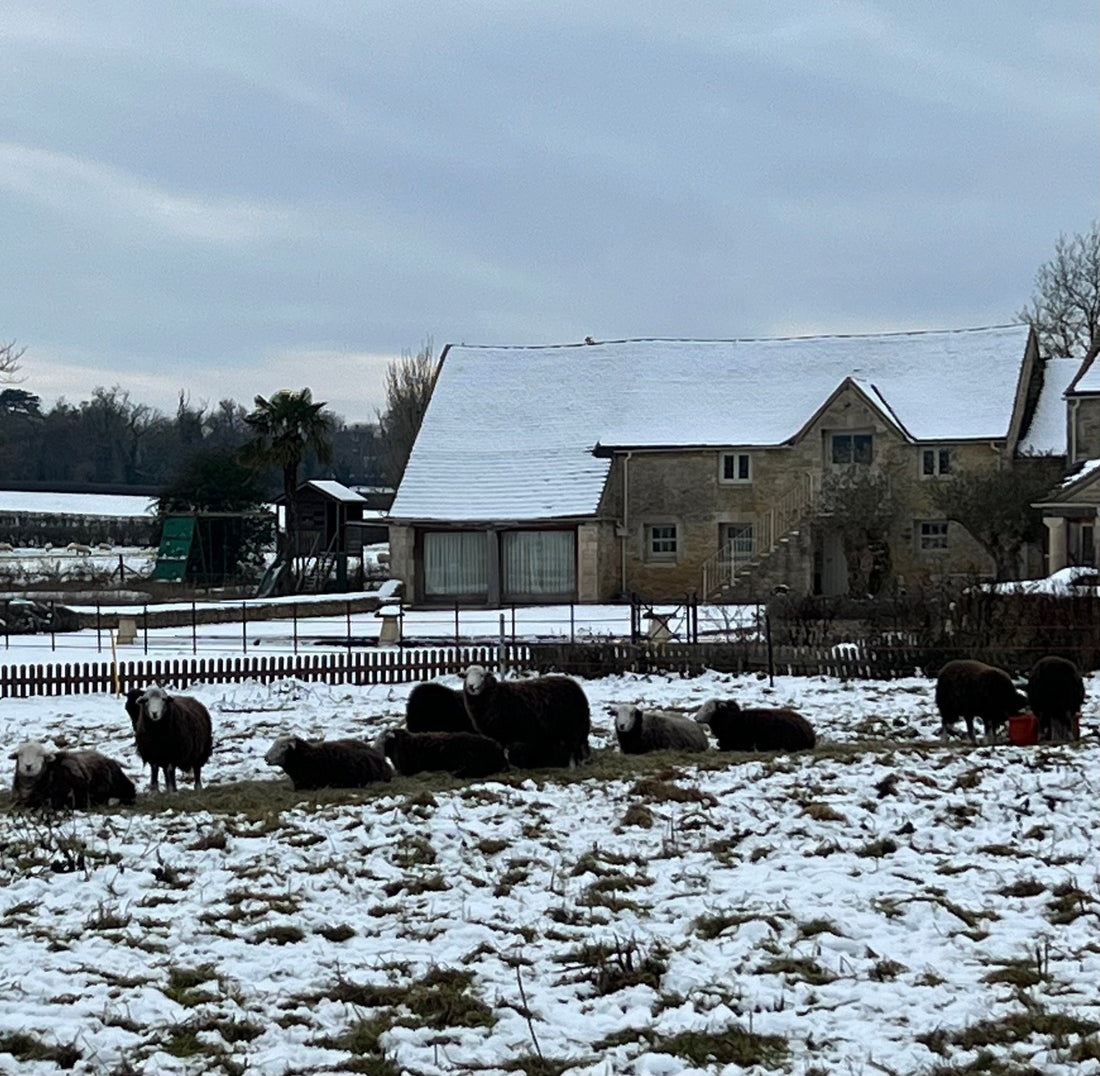
Adapting our gardens
SEO Space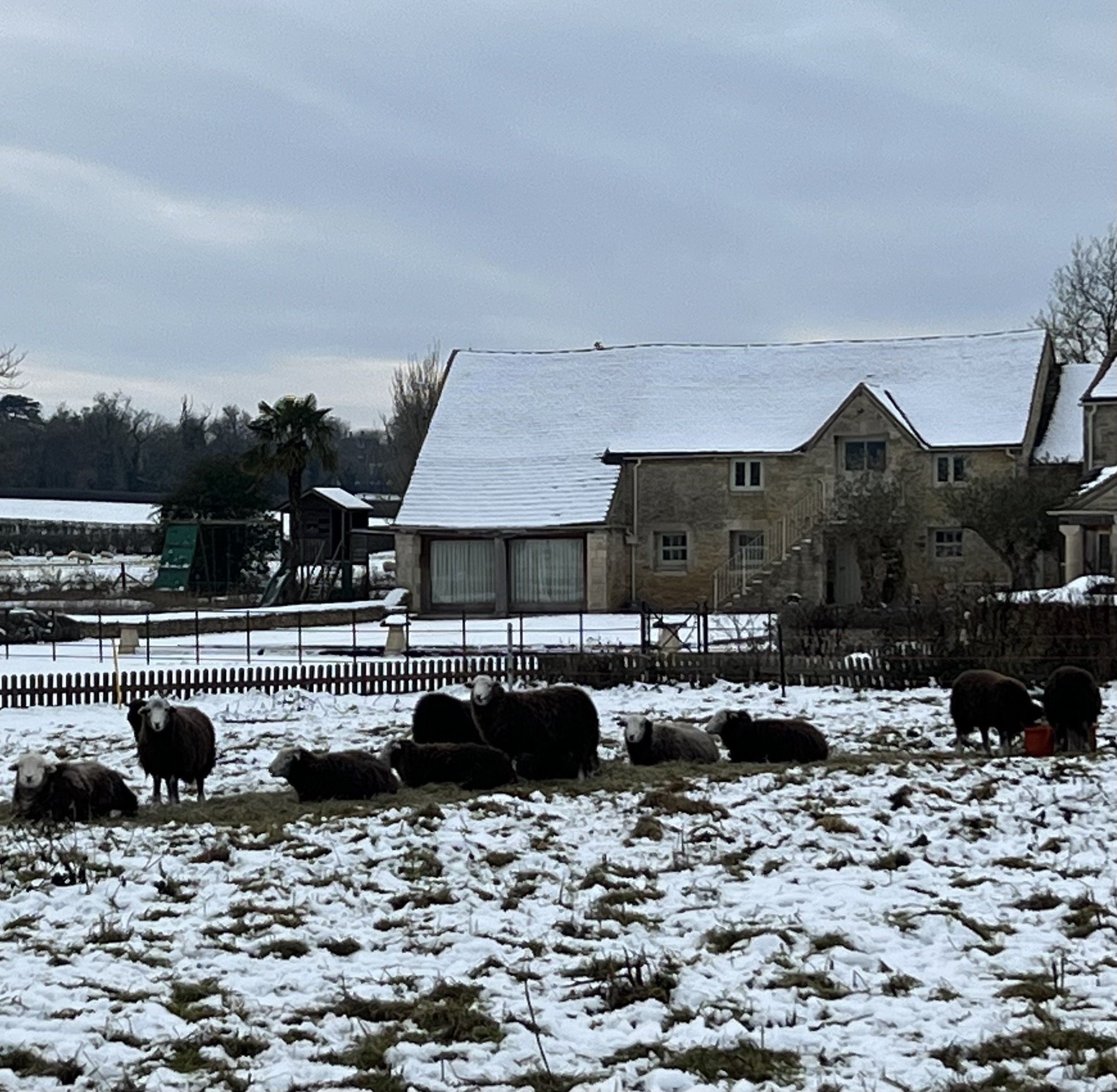
‘The girls’ seem content in a frozen landscape
As 2022 draws to its close, both gardening magazines and the radio have been reflecting on the extreme weather conditions that have plagued us during a year which is likely to prove the fifth hottest on record worldwide and the hottest ever in UK. Weather events ranged from the highest temperatures ever recorded to extreme winds, torrential downpours and an early cold snap. Organisations such as RHS and the National Trust talk about building resilience into the ecosystem – never was Beth Chatto’s advice so keenly followed – and we are ever more concerned about plant and animal diseases that are globally transmitted and about which we can do little except remain alert to their spread and do what we can locally.
Most of the advice I read seems to focus on drought tolerant plants but, at the moment, I am more concerned about the five day freeze that blanketed us in snow and freezing temperatures in mid-December.
I don’t want to sound ungrateful for the cold that probably rebalanced some of the pests and diseases that plague our gardens during the more temperate months and ‘the girls’ certainly enjoyed it. The local shepherd, who uses the paddock for some for her in-lamb rare breeds, tells me they prefer snow to driving rain and, as a friend observed, they look much prettier against the snow than white sheep do.
We have become accustomed, over the last ten years and more, to leaving plants in the ground that were once considered only marginally hardy (my mother never left dahlias or agapanthus in the ground overwinter in Gloucestershire while mine have come to no harm in nearly a decade). I’ve been walking round the garden daily looking for signs of hope (and there are some) but I am beginning to be concerned about a number of shrubs that seem to have suffered badly in a week when temperatures didn’t rise above freezing and which are now showing signs of extreme stress.
I have three established olives in the garden, two in very large Italian Terrace tubs and one in the orchard and all of them are shedding leaves at an alarming rate. I first noticed what I thought was a scattering of feathers round one of the trees and soon realised that it was the pale undersides of olive leaves that were falling rapidly. The twigs and branches are still green but I worry about the damage these pretty little trees have suffered. I have also noticed that my pittisporums have practically no leaves left. These shrubs make neat hummocks of evergreen foliage that I use for cutting year-round (‘Tom Thumb’ is a deep burgundy that sets off Spring flowers perfectly). This year I will have no leaves to set against yellow ‘Tete a Tete’ daffodils or Pacific blue polyanthus in a vase.
Am I worrying unnecessarily or have others noticed signs of stress in the garden?
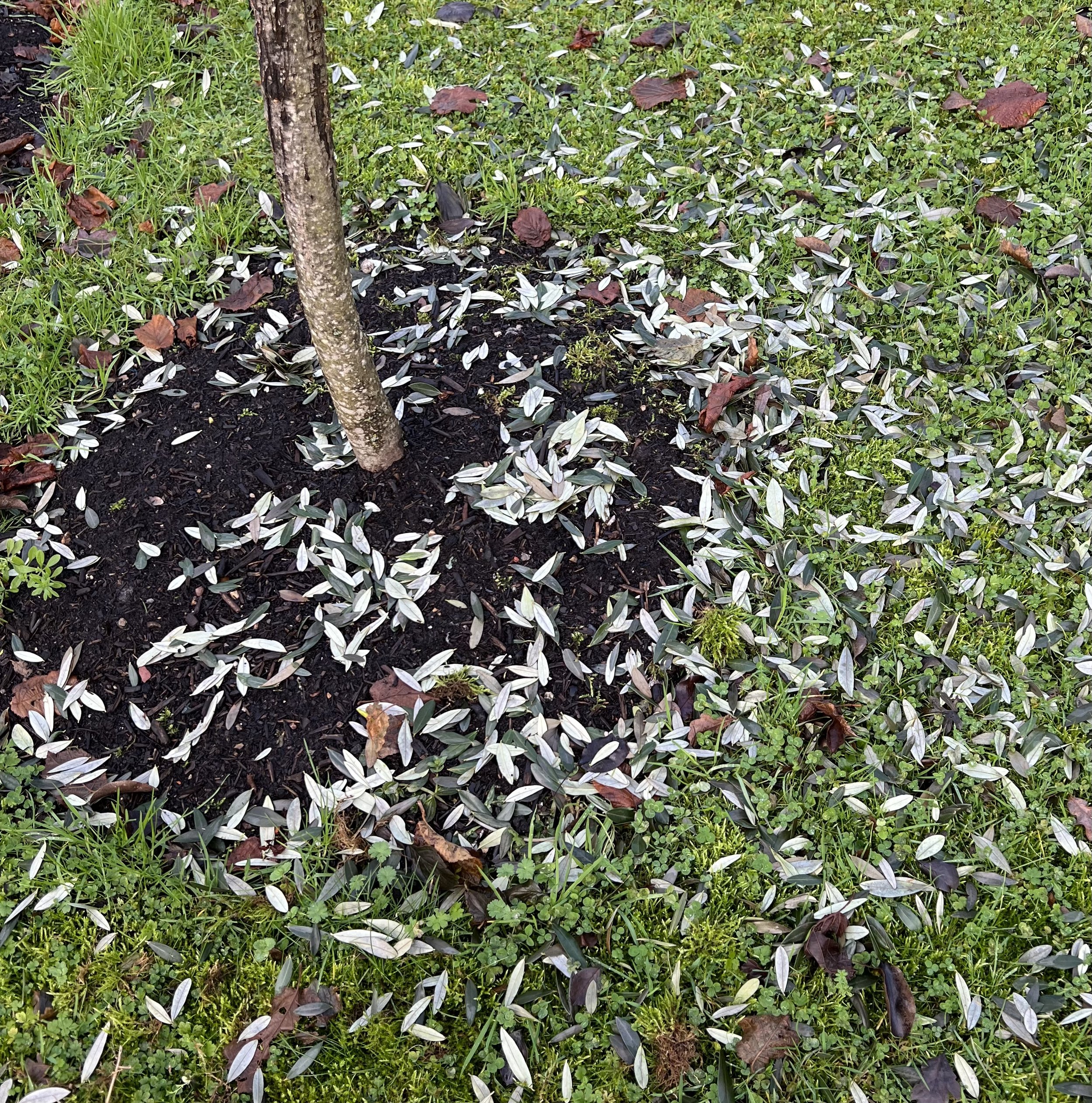
My olive trees have suddenly and dramatically shed their leaves after the recent snow
However, there are signs of hope. From Christmas Day, I begin to look out for emerging growth. Ours is not an early garden and I am sure that my brother, in Devon, already has budding snowdrops in his but I always thrill to the first hellebore thrusting its way through the autumn mulch and the tiny green/white spikes of snowdrops coming through. Both snowdrops and hellebores are rewarding plants.
-
Snowdrops, like many bulbs, clump up over the years and can be divided ‘in the green’. Once the flowers have faded, lift the clumps, divide them into small groups of five or seven and replant them – they will form new clumps in a few years
-
Hellebores, particularly Helleborus hybridus, self-seed freely. This habit is both good and bad! It’s a cheering sight to have hellebores in full flower in February and March but they are promiscuous and, over the years, the seedlings’ flowers emerge as a muddy pink
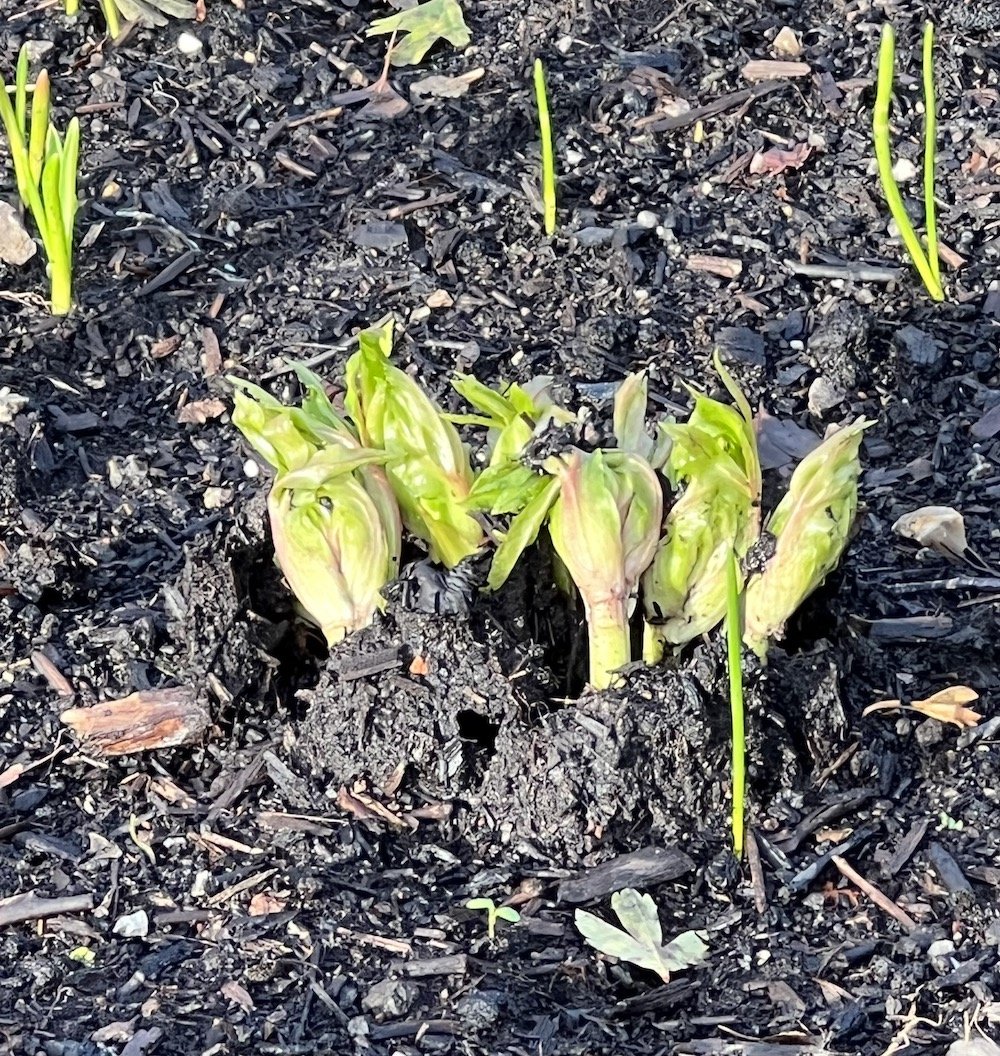
The first signs of hellebores emerging are the tender buds
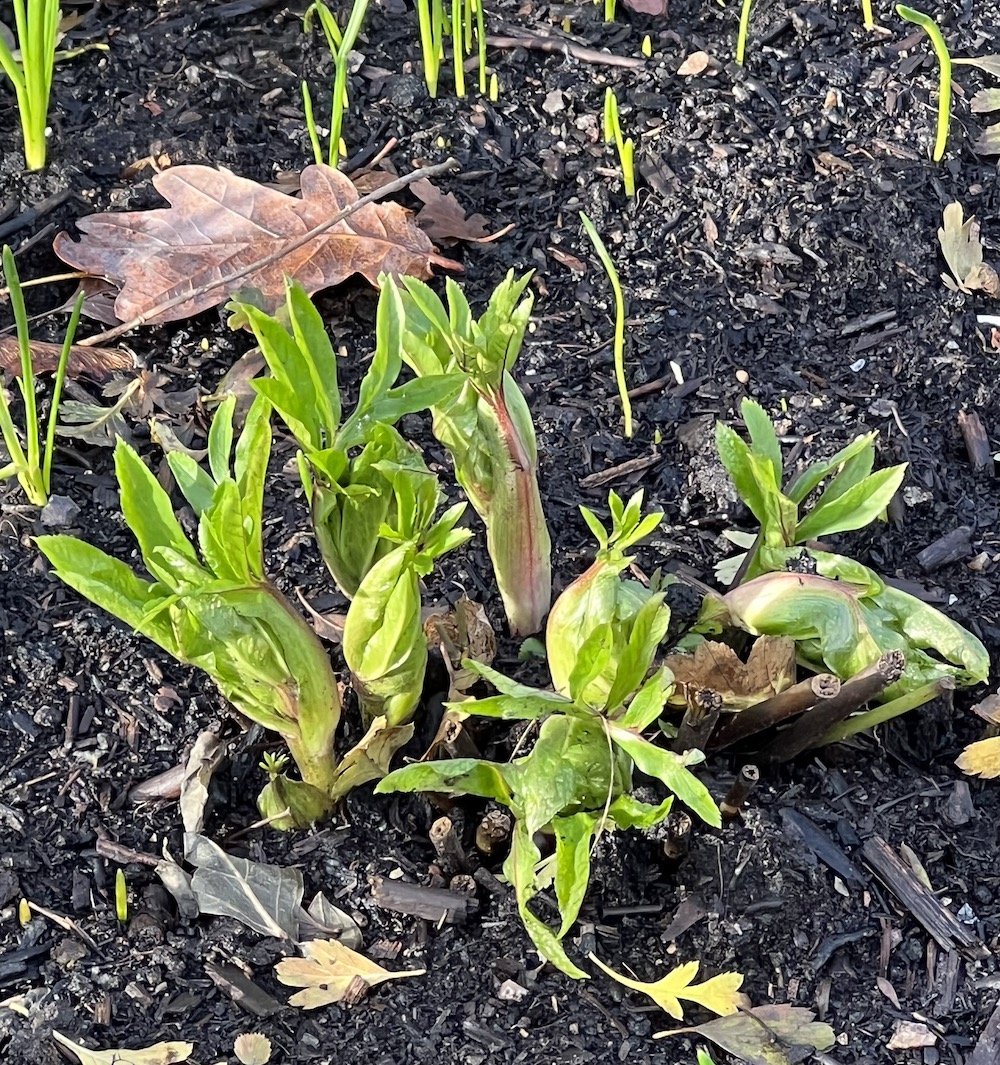
Helleborus hybridus pushes its way through the mulch
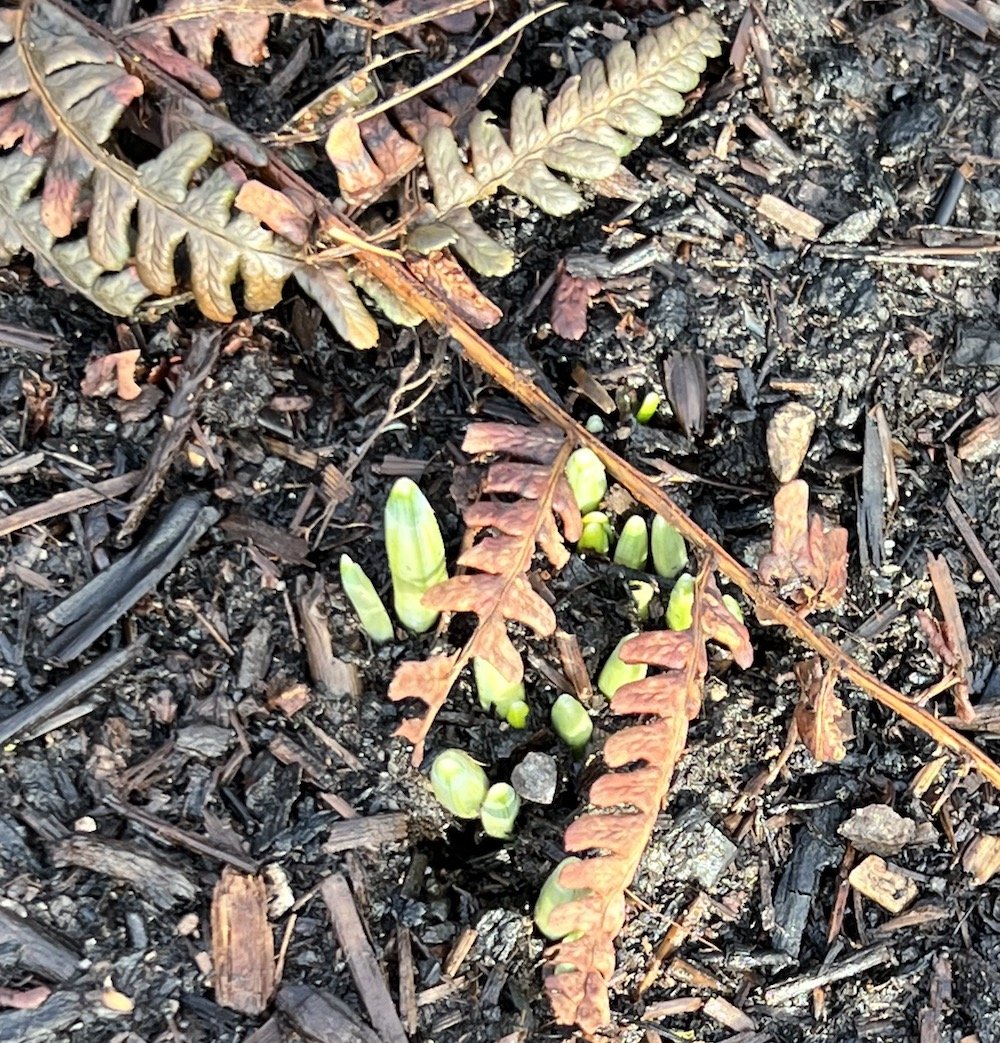
Snowdrop spears are just beginning to poke through the soil
Our focus next year, and over the coming years, is to adapt our garden to be more environmentally friendly, more resilient and more able to adapt to our changing climate. In my next journal I shall look at how our NFU tree planting scheme is progressing (the first two plantings are ready to go into their permanent positions); what we are doing for wildlife in the garden and I shall look at our wildflower meadow and what we need to do to keep the thugs at bay!
